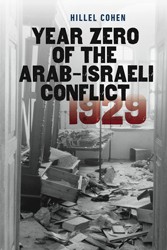Although the brief introduction and historical overview are the same as in the 2002 book, a large two-page physical map of the Middle East is a welcome addition to this revised edition. The author discusses the following areas: North Africa (Egypt and Libya), Israel, the Palestinian Authority, and Jordan, Lebanon, Syria and Iraq, The Northern Tier (Turkey and Iran), and last, The Arabian Peninsula, consisting of Saudi Arabia, Kuwait, the United Arab Emirates, Bahrain, Qatar, and Yemen. As in the 2002 edition, each section covers the geography, economy, and people of the region. There are updated population statistics, and maps (all in shades of aqua, white and black) for each region. Recent events are discussed in the text, along with political beliefs of each area. Unlike the older edition, no flags are included. The text is clear and very readable, so that middle school and high school students, as well as adults, will begin to understand the background of this “volatile hot spot.”
In the encyclopedia section, the biographical information on leaders, geographic areas, and groups has been updated, and includes black-and-white photos of the featured people. A chronology ends in 2007 with the UN Security Council passing a resolution tightening economic sanctions against Iran for its refusal to stop its program to build nuclear weapons. Also appended are a selected bibliography, source notes, a list of suggestions for further reading, and an extensive index. There are three websites: the CIA’s official website, the U.S. State Department’s website with their annual “International Religious Freedom Report,” and Freedom House’s site with its freedom in the world rankings and such information as a report on freedom of the press in countries around the world. Recommended for grades 7 – 12 despite the hefty price. There is a discount if schools and libraries order directly from the publisher.





